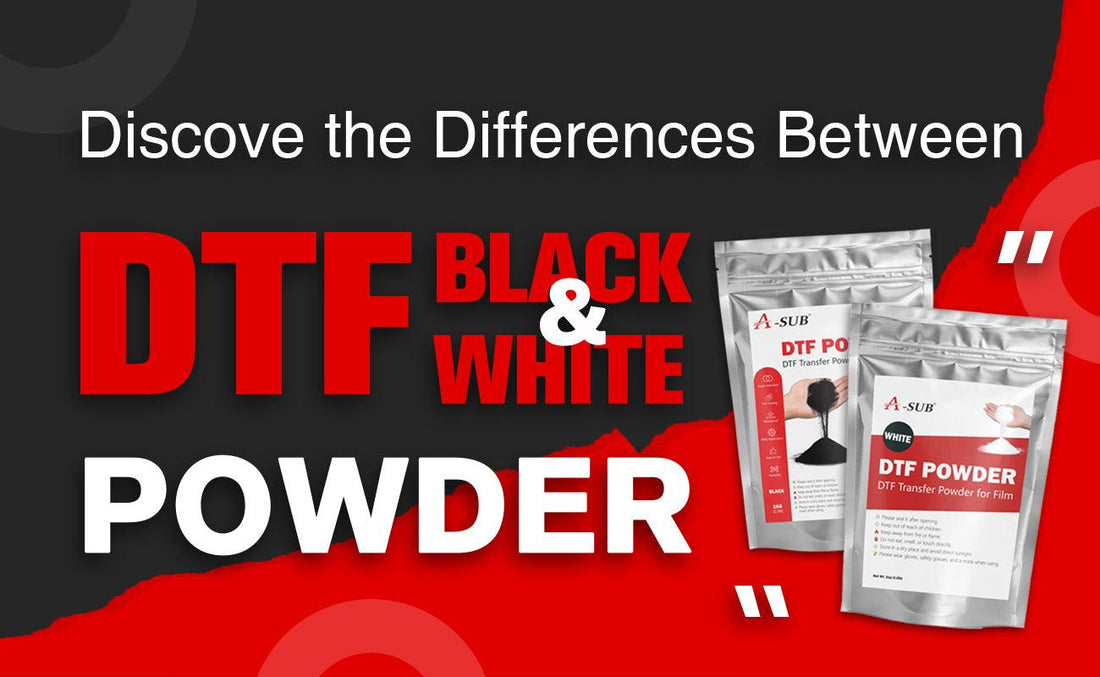Discover the Differences Between DTF Black Powder and White Powder

Introduction
DTF (Direct to Film) printing technology has gained significant popularity in recent years. One of the crucial components in DTF printing is the DTF powder. In this article, we will delve into the key distinctions between DTF black powder and white powder, analyzing their characteristics, applications, and printing effects.DTF Black Powder
DTF black powder, known for its deep hue, is primarily composed of carbon black and resins. Its dark color makes it an ideal choice for printing on dark-colored materials. Additionally, the fine particles of the powder enable excellent adherence to cloth, ensuring that the printed image remains intact for an extended period.
The powder consists of a combination of TPU rubber powder and active carbon, which synergistically prevent melting during the printing process. As a result, it has gained popularity for its effectiveness in printing on polyester, bags, and other textiles that are prone to sublimation.

DTF White Powder
White DTF powder consists of titanium dioxide, resin, and additional additives that provide its distinctive white color. Compared to black DTF powder, the particles in white DTF powder are larger, making it an ideal choice for printing on light-colored materials. Additionally, white DTF powder exhibits excellent adhesive properties, ensuring that the prints on fabric remain intact for an extended period of time.

A Comparative Analysis: DTF Black Powder vs. White Powder
The primary distinctions between black and white DTF powder lie in their color, particle size, fabric compatibility, adhesion properties, and additional layer requirements.
Color is the most prominent distinguishing factor between black and white DTF powder. White DTF powder exhibits a pristine white color, while black DTF powder possesses a darker shade.
Particle size sets these powders apart as well. White DTF powder consists of larger particles compared to the smaller particles found in black DTF powder. This particle size discrepancy directly influences the coverage and precision of the prints produced.
Fabric type plays a crucial role in determining the suitable powder choice. Black DTF powder excels at printing on textiles with dark colors, while white DTF powder is more suited for fabrics with light colors.
Adhesion properties differ between the two powders. White DTF powder exhibits superior adhesion to synthetic fibers, making it the preferred choice for such materials. On the other hand, black DTF powder excels in adhering to natural fibers.
In terms of achieving vibrant colors, both powders may require additional coatings. However, due to its darker color, black DTF powder may necessitate a higher number of additional layers compared to white DTF powder.
To select the ideal powder for your specific printing requirements, it is essential to experiment with both options and test them on various materials. This hands-on approach will enable you to determine which powder best suits your needs.
Conclusion
In summary, DTF black powder and white powder exhibit distinct characteristics and qualities that make them suitable for different printing needs. While black powder offers rich color saturation and excellent durability, white powder provides a contrasting base for vibrant and sharp prints. The choice between these powders depends on factors such as the desired color outcome, printing requirements, and the specific application.
As DTF technology continues to advance, both black powder and white powder are expected to evolve, offering improved features and expanding their potential applications. It is crucial for DTF printers and enthusiasts to stay updated with the latest advancements in DTF powders and choose the one that best aligns with their specific printing goals.
By understanding the differences between DTF black powder and white powder, individuals can make informed decisions, optimize their DTF printing experience, and unlock the full potential of this innovative technology.
No comments




0 comments